Richmond Palace – Can You Find This Hidden Gem in London?
Welcome to London, home of Royal landmarks, including Buckingham Palace and Kensington Palace. But did you know that a hidden gem is tucked away among the bustling city streets – Richmond Palace? This lesser-known palace has a rich history and stunning architecture.
In this blog post, we’ll take a closer look at this often-overlooked palace and discover the wonders it holds within its walls.
The Places Where We Go contains affiliate links and is a member of the Amazon Services LLC Associates Program. As an Amazon Associate, we earn from qualifying purchases at no extra cost to you when you purchase using one of these Amazon links. Read our disclaimer and privacy policy for more information.
Get Free Weekly Travel News Updates

In Search of Richmond Palace in London
Our journey to find Richmond Palace was personal. During WWII, my dad visited here on holiday from the Royal Air Force in Halton. Along with other young Polish boys serving in the RAF, he was brought to the residence as a guest of Virginia Cherrill, known then as Lady Jersey. We confirmed this bit of family history through photos and depictions in the book “Survivors of War” by Dan Dobrucki.
Getting to Richmond Palace
Richmond Palace is located in the London Borough of Richmond upon Thames, just a short train ride from central London. To get there, take the District line to Richmond Station, and then it’s about a 10-minute walk through beautiful greenery to the palace gatehouse.
Once you arrive, you’ll see a glimpse of the striking Tudor brick gatehouse.
Our Journey to Richmond Palace through Richmond Green
We traveled to the Richmond district to find the grounds of Richmond Palace. Stepping out of Richmond Station, we entered the bustling main avenue lined with storefronts for block after block.
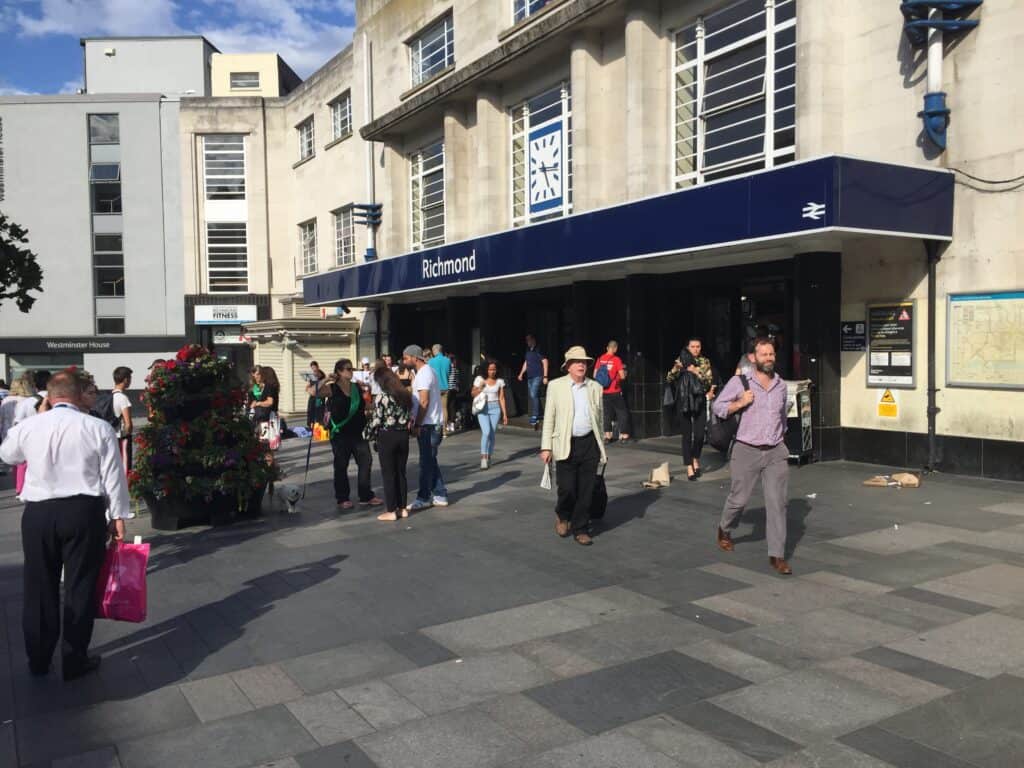
We thought this was a strange place for a palace residence. We turned a corner and walked towards Richmond Green – a vast open-air park for the public.
Richmond Green is a beautiful and historic open space in Richmond, London. It covers over 12 acres of land and is surrounded by stunning architecture, such as Georgian townhouses, the Church of St Mary Magdalene, and our destination, the iconic Tudor gatehouse of Richmond Palace.
The green is known for its peaceful atmosphere, where locals and visitors can relax on the grass or take a leisurely walk around the perimeter. It also serves as a popular spot for picnics, outdoor events, and even cricket matches during the summer months. The park is well-maintained, with colorful flower beds, tree-lined paths, and benches for people to sit and enjoy the surroundings.
Its rich history dates back to the 16th century when it was used as a royal hunting ground in Richmond; Richmond Green is an integral part of the local community. It provides a place to relax for anyone looking to escape the hustle and bustle of central London.
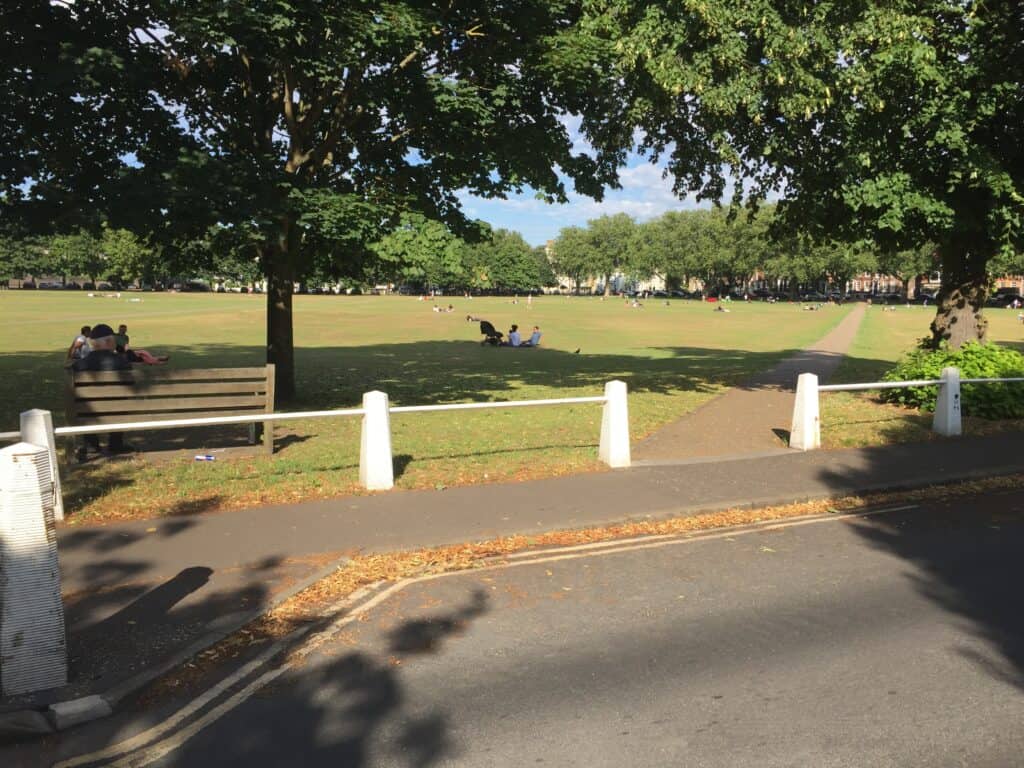
A Brief History of London’s Richmond Palace
This residence has roots in the 1200s and once housed several English monarchs. The palace grounds once occupied the land between the River Thames and Richmond Green. It was Henry VII who built Richmond Palace in 1501. Using the site of an older royal residence, Richmond Palace replaced an early manor house taken by Edward I in 1299.
A blue plaque on a wall identifies the property as the former residence of King Henry VII (formerly known as the Earl of Richmond) and Queen Elizabeth I. Both of these monarchs also died at Richmond Palace.
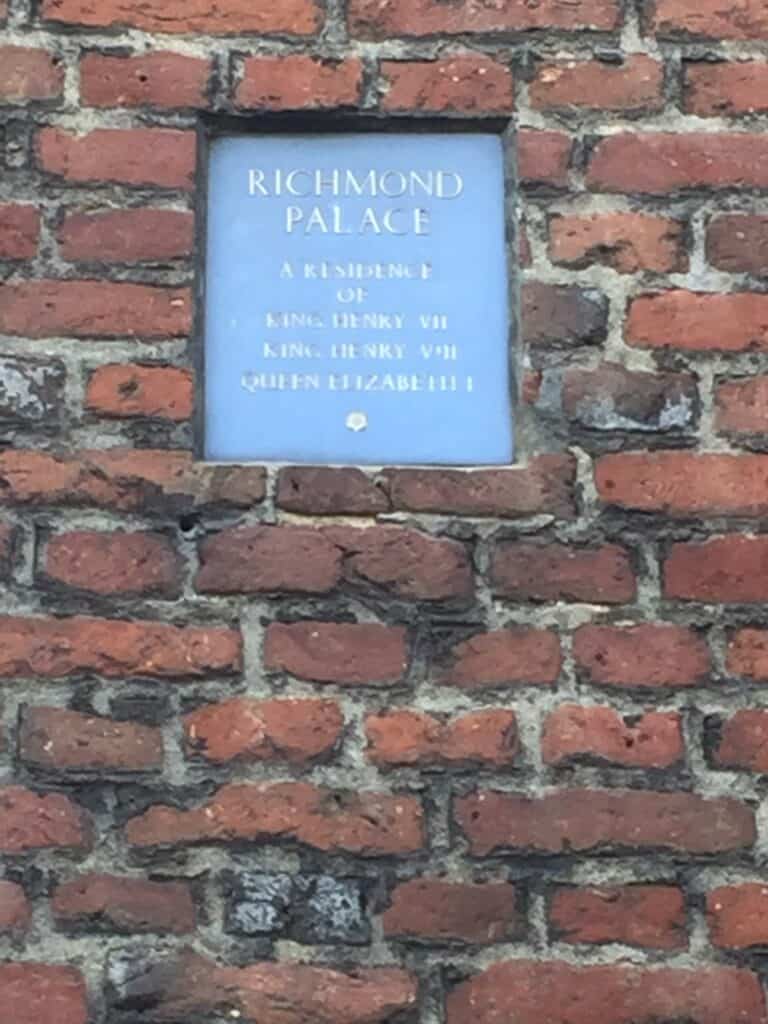
A Residence for the Monarchy
The first monarch to reside at Richmond was Richard II in 1383. However, after his wife Anne of Bohemia died of the plague, the devastated king ordered the palace structure to be destroyed. Just 30 years later, Henry V agreed that the location was suitable for a palace.

Henry VIII was also a resident of Richmond Palace but later was gifted Hampton Court and departed Richmond. Two of his wives lived at this palace. Anne of Cleeves lived here after her divorce, and Catherine of Aragon also spent some time here.
Searching for Richmond Palace in London
Hints that we were on the right path were clear upon seeing street names, including ‘Old Palace Lane’ and ‘Old Palace Yard.’ On the left side of the street, we found the old Richmond Palace.
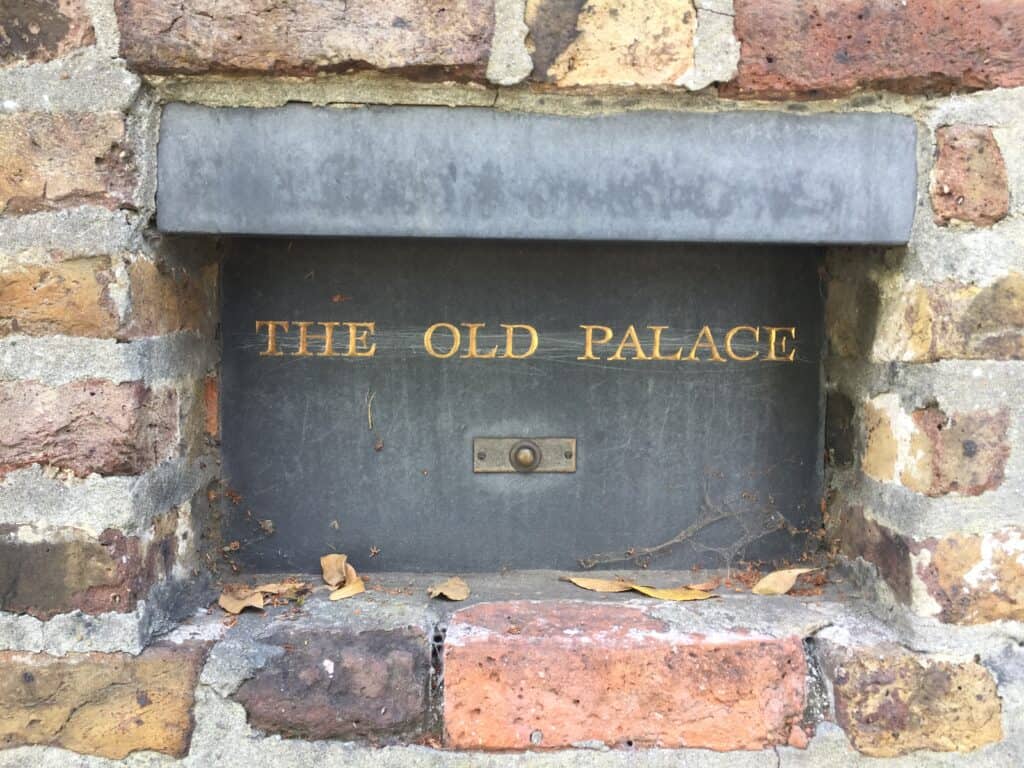
Despite its rich history, Richmond Palace remains off the beaten path as far as castles go. Sure, King Henry VII died here. It was under Oliver Cromwell that this palace was destroyed. But perhaps because most of the original structures no longer stand, this former residence for the British monarchy has become a minor footnote. A visitor needs to be purposeful to search out these once-royal grounds.
After Cromwell and company oversaw the destruction of Richmond Palace, the former palace never recovered. Over time, the grounds returned to the hands of the monarchy, though it was decided to use the grounds as a revenue generator versus rebuilding a proper royal palace. Eventually, a series of houses were built on these grounds, made available for rent, mainly to the well-to-do crowd.
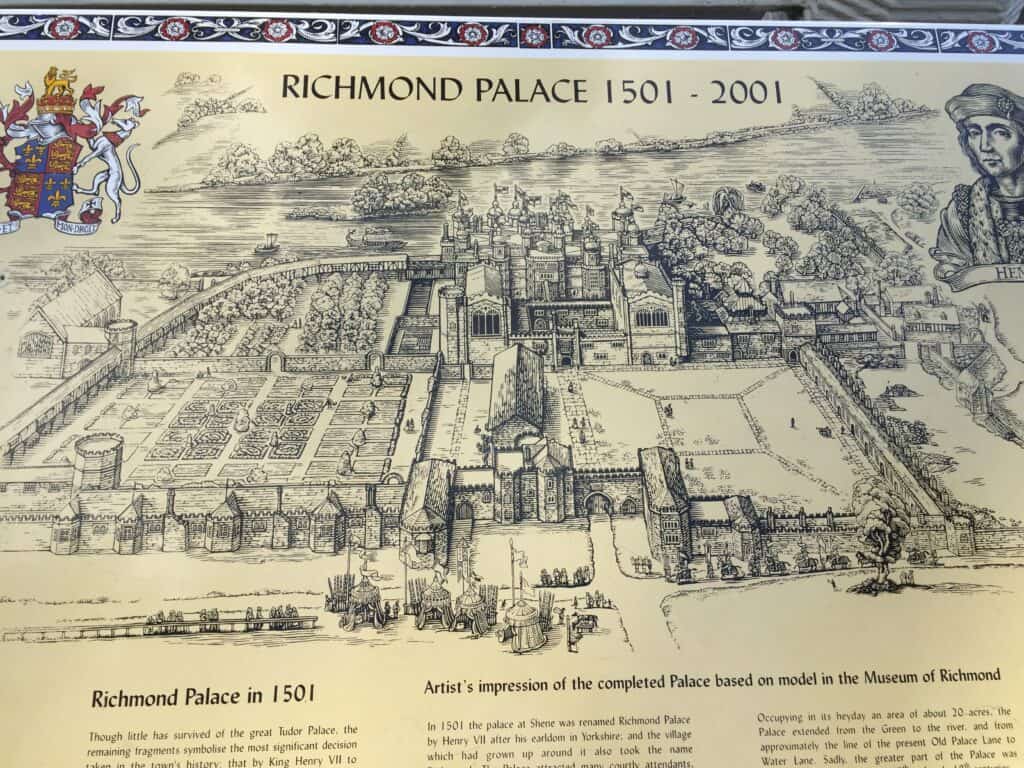
Viewing Richmond Palace
Surrounded by an extensive brick wall, getting a good view of Richmond Palace can be challenging. An informative panel is available to read outside the property, which recaps its history as far back as the 1200s. At one time, Richmond Palace pioneered garden spaces with England’s first-knot garden and Renaissance-style garden.

During the ensuing decades, modest structures were stood up on these grounds – wooden, not up to par with Britain’s landmark castles. But Henry VII made a worthy restoration of a palace at Richmond his mission. In 1501, the rebuild of a palace was completed, taking on the names Sheen Palace as well as the “Palace of Richmond.”
What survives of Richmond Palace?
Much of the old Tudor palace was demolished in the 17th century, leaving just a few ruins and structures. Of the original Tudor buildings that face the park area, little survives. At Richmond Palace today, a single wall still stands along with the Gateway, Palace Gatehouse, and a small section of The Old Palace. Without the original buildings intact, our knowledge today of historic Richmond Palace is limited to surviving sketches and drawings of the palace.
Today, the gatehouse is a private residence and only viewable to the public from the outside. Surviving from Tudor times, the gatehouse still displays Tudor brickwork.
The site spans from Richmond Green to the river. It includes the wardrobe building (which once held court clothing) and the Trumpeter’s House in Old Palace Yard.
REQUEST TO READERS: If a property resident someday stumbles upon this article, we are a flight away from a trip back to London should the opportunity to tour the grounds ever arise.
Where is Richmond Palace?
Richmond Palace, once a magnificent royal residence in England, no longer stands in its original glory. However, you can explore its history and remnants in the area of Richmond, London.
To find where Richmond Palace once stood, head to Richmond Green. This picturesque open space was the site of many of the palace’s grand events.
While the palace itself has been largely lost to time, you can still see some remnants, such as the Gate House, which offers a glimpse into the past. Walking around the area of the lost palace, you can also enjoy the charming surroundings that were once the backdrop to royal life.
Additionally, local plaques and information displays at the Richmond Palace location provide historical context, making it a perfect spot for history enthusiasts wanting to step back in time.
Frequently Asked Questions – FAQ
No, Richmond Palace does not exist in the form it once did. The former royal residence was severely damaged by fire, destroying nearly the entire palace. Today, the impressive view of Richmond Palace from the River Thames no longer exists as it once did. Still, the palace site holds historical significance and is marked by historic signs near Richmond Green.
Yes, King Henry VIII did live in Richmond Palace. After the palace was built by his father, King Henry VII, Henry VIII inherited it. He spent time at the palace before he was gifted Hampton Court. Richmond Palace was also notable as the birthplace of one of Henry VIII’s sons in 1510.
After the fall of Cardinal Wolsey, Richmond Palace became known as the ‘Palace of Forgotten Queens,’ where Henry VIII would hide his past. One of his wives, Anne of Cleves, also resided in the palace following their divorce.
Richmond Palace no longer exists as it was largely demolished in the 17th century by order of the Parliament of England. The main entrance and gatehouse are still standing and occupied as private residences today.
Listen to our Richmond Palace Podcast episode
Concluding the Hunt for Richmond Palace in London
This destination won’t land on the itineraries of many tourists in London. It is a fascinating hidden gem for those interested in the history of the monarchy and architecture. For us, it checked off a bucket list stop as we continued seeking historic destinations connected to our family history.
What destinations are part of your genealogical pilgrimage?
Thanks for reading our article. Happy travels, and we hope to see you at the places where we go!
Julie & Art
#richmondpalace
Richmond Palace London
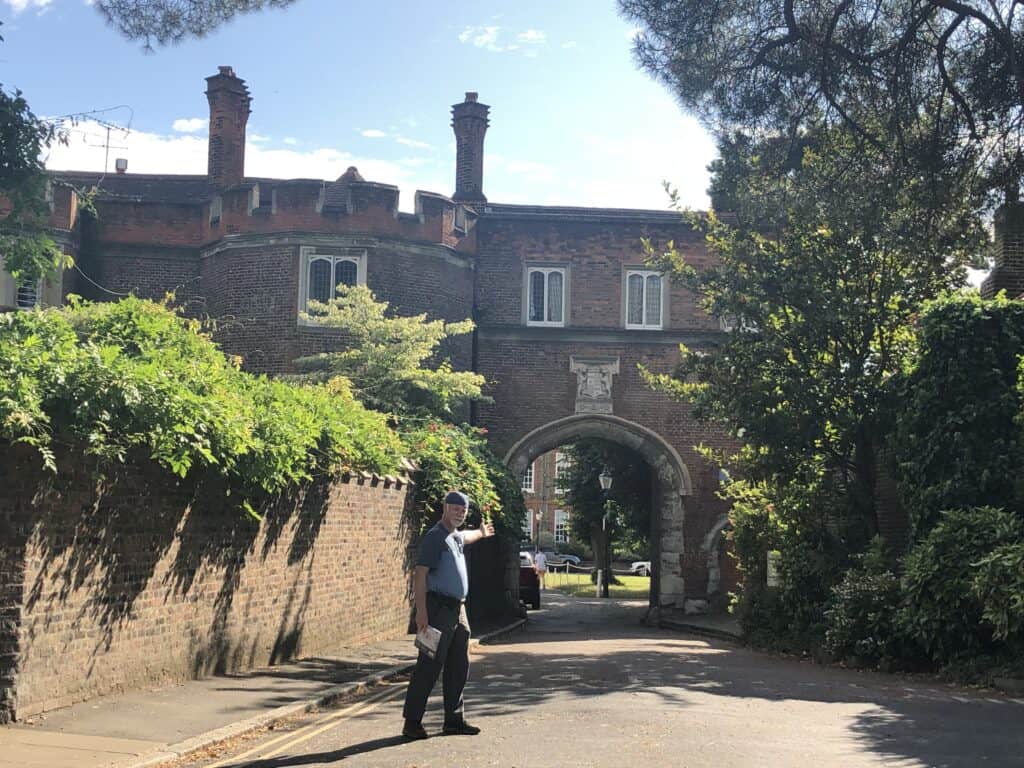
Discover more hidden gems in London
More family roots travel adventures
Tracing Welsh ancestry in Raglan, Wales
Walking in the footsteps of Boleslaw Dobrucki
Exploring family roots in East Los Angeles

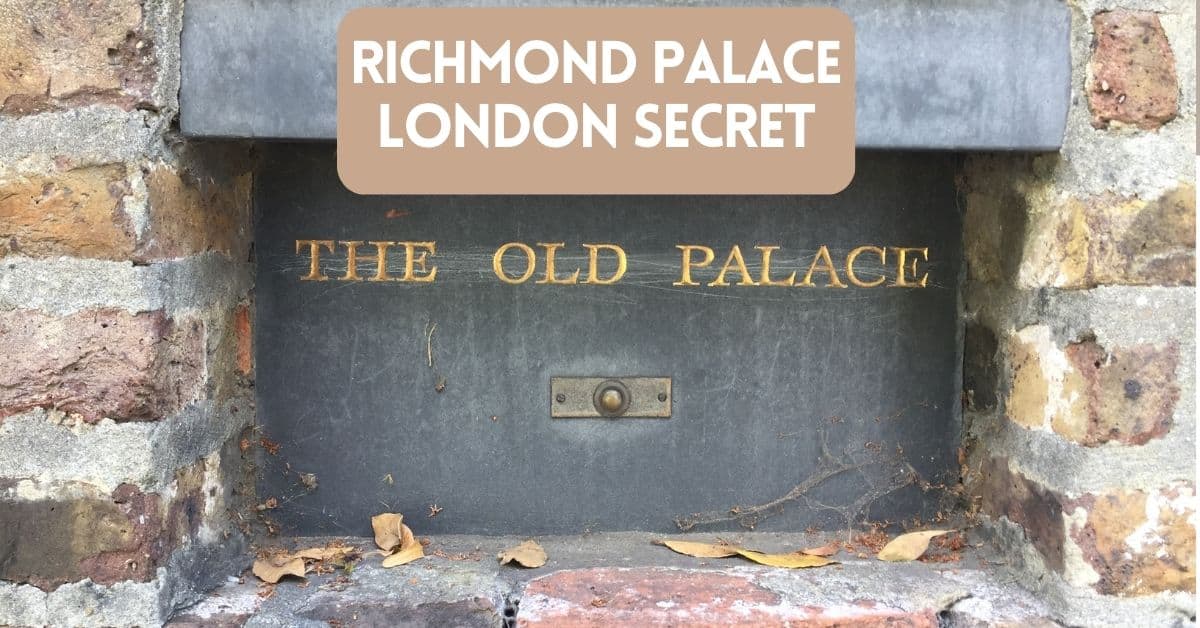
4 Comments
Comments are closed.